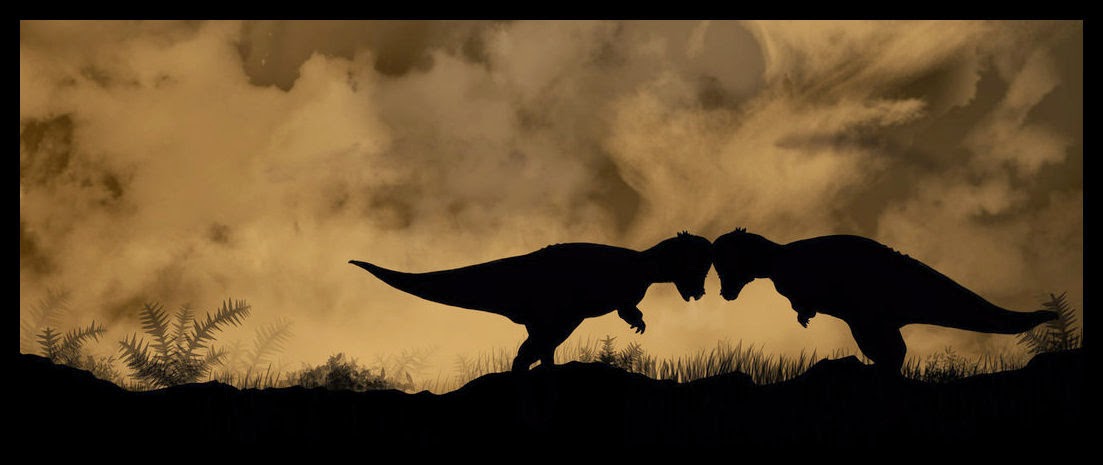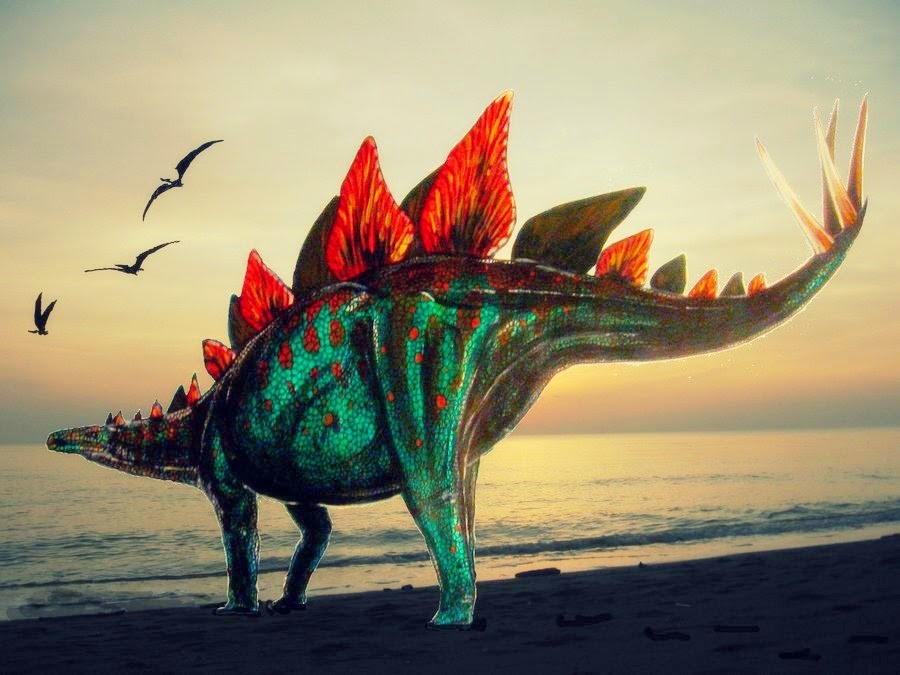Type Species: Apatosaurus ajax
Classification: Dinosauria-Saurischia-Sauropodomorpha-Sauropoda-Diplodocidae-Apatosaurinae
Time Period: late Jurassic
Location: North America
Diet: Herbivore
Othniel Marsh, the paleontologist who discovered Apatosaurus, created its name from a combination of Greek words: apate (meaning "deceptive") and sauro, meaning "lizard." This dinosaur was deceptive indeed, and legions of schoolchildren have learned about Apatosaurus under the pseudo-name Brontosaurus (but that is another tale for another time). Marsh named this sauropod the "deceptive lizard" because its monstrous bones resembled those of mosasaurs, a large marine reptile whose remains are scattered throughout North America. Apatosaurus could reach up to seventy feet long from the head to the tip-o'-the-tail, and they could weigh over thirty tons (the equivalent of five adult African elephants). Their hips, at twelve feet above ground level, were the highest parts of their bodies (except for the head perched atop the neck).
 |
| a full-grown Apatosaurus stretched nearly as long as three Abram Tanks |
Apatosaurus is one of the largest land animals found in the fossil record, though it's dwarfed by many of the later sauropods that would evolve during the Cretaceous. These dinosaurs traveled in herds, and one can image the sight of dozens upon dozens of these lumbering behemoths shaking the ground in their slow and steady foraging march. Their long, thick tails ended in a whip, and despite earlier depictions of these sauropods with their tails dragging along the ground like those of alligators, Apatosaurus would've held the tail off the ground. Muscles attached to the tail bones kept the tail rigid, but the muscles also enabled Apatosaurus to lash the tail against predators. Although the tail would've served as a whip of monstrous proportions, the main function of the tail was that of a balancing beam; by holding the tail directly outwards from the body, Apatosaurus was able to distribute its massive weight between its head and tail so that it didn't topple over from being so top-heavy.
Its stout legs were held straight beneath their bellies, with blunt toes at the feet. Its chest was gargantuan and the ribs were like cages, protecting the internal organs and the pumping heart. Its vertebrae were tall and straight, filled with hollow gaps to make them lighter. Apatosaurus fed day and night; because of their size, they had to constantly eat. To allow time for sleep, they swallowed their food whole, allowing gastroliths (stones swallowed to mush up the tough plant fibers within their bowels) to do the main work. Their necks reached high, but because of the weight and structure of the neck bones, they had a limited range for raising their necks; the thickest regions of the neck couldn't be lifted above their shoulders. The skull tapered to form a shallow mouth lined with delicate teeth at the front of the jaws for stripping foilage off the trees.

Apatosaurus is replete with misinformation. As aforementioned, early depictions of Apatosaurus depicted it dragging its tail along the ground in the vein of modern reptiles; however, biomechanical reconstructions of Apatosaurus' skeleton show that this isn't accurate. Furthermore, sauropod trackways show no tail marks, and sauropod tail bones don't show any wear or tear from becoming tangled in plants or caught in cracks in the rocks, as one would expect if Apatosaurus dragged its tail. Another misconception is that Apatosaurus (or sauropods in general) spent most of their time in the water; but Apatosaurus shows no adaptations for this behavior, and trackways are found in semi-arid areas where water isn't overly abundant. In addition, the water pressure that would be exerted on the mammoth Apatosaurus would likely have crushed the animal's rib cage, and this would be far from conducive to survival and reproduction. Adult Apatosaurs had few enemies, but the juveniles would've been easy prey to any lurking predators; trackways of these migrating sauropods show that the young were kept in the middle of the herd, protected from the outside by the larger, grown-up sauropods.
















.jpg)




















